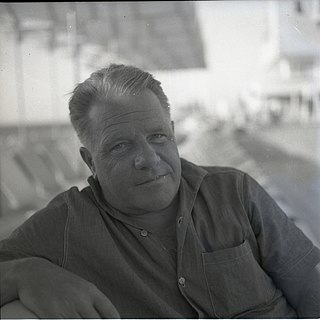
Lawrence George Durrell was an expatriate British novelist, poet, dramatist, and travel writer. He was the eldest brother of naturalist and writer Gerald Durrell.
Alexandria is a city in Egypt.

Lake Mariout, is a brackish lake in northern Egypt near the city of Alexandria. The lake area covered 200 square kilometres (77 sq mi) and had a navigable canal at the beginning of the 20th century, but at the beginning of the 21st century, it covers only about 50 square kilometres (19 sq mi).
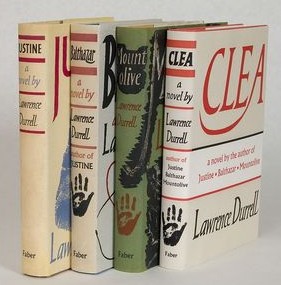
The Alexandria Quartet is a tetralogy of novels by British writer Lawrence Durrell, published between 1957 and 1960. A critical and commercial success, the first three books present three perspectives on a single set of events and characters in Alexandria, Egypt, before and during the Second World War. The fourth book is set six years later.

Konstantinos Petrou Kavafis, known, especially in English, as Constantine P. Cavafy and often published as C. P. Cavafy, was a Greek poet, journalist, and civil servant from Alexandria. His work, as one translator put it, "holds the historical and the erotic in a single embrace."

Clea, published in 1960, is the fourth volume in The Alexandria Quartet series by British author Lawrence Durrell. Set in Alexandria, Egypt, around World War II, the first three volumes tell the same story from different points of view, and Clea relates subsequent events.

Justine is a 1969 American drama film directed by George Cukor and Joseph Strick. It was written by Lawrence B. Marcus, based on the 1957 novel Justine by Lawrence Durrell, which was part of the series The Alexandria Quartet.

No New Land is a novel by M. G. Vassanji, published in 1991. The action is largely set in Dar es Salaam and Toronto. The title is derivited from Lawrence Durrell's novel The Alexandria Quartet, in which he translates Constantine P. Cavafy's "The City".

Monsieur, or The Prince of Darkness (1974), is the first volume in Lawrence Durrell's The Avignon Quintet. Published from 1974 to 1985, this sequence of five interrelated novels explore the lives of a group of Europeans before, during, and after World War II. Durrell uses many of the experimental techniques of metafiction that he had integrated into his Alexandria Quartet, published 1957 to 1960. He described the later quintet as a quincunx.

The Revolt of Aphrodite consists of two novels by British writer Lawrence Durrell, published in 1968 and 1970. The individual volumes, Tunc and Nunquam, were less successful than his earlier The Alexandria Quartet, in part because they deviate significantly from his earlier style and because they approach more openly political and ideological problems.
The Avignon Quintet is a five-volume series of novels by British writer Lawrence Durrell, published between 1974 and 1985. The novels are metafictional. He uses developments in experimental fiction that followed his The Alexandria Quartet (1957-1960). The action of the novels is set before and during World War II, largely in France, Egypt, and Switzerland.
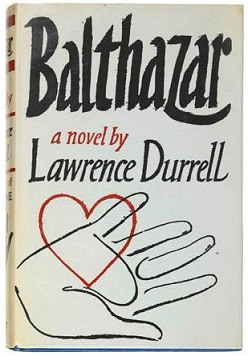
Balthazar, published in 1958, is the second volume in The Alexandria Quartet series by British author Lawrence Durrell. Set in Alexandria, Egypt, around World War II, the four novels tell essentially the same story from different points of view and come to a conclusion in Clea. Balthazar is the first novel in the series that presents a competing narrator, Balthazar, who writes back to the narrating Darley in his "great interlinear."

Mountolive, published in 1958, is the third volume in The Alexandria Quartet series by British author Lawrence Durrell. Set in Alexandria, Egypt, around World War II, the four novels tell essentially the same story from different points of view and come to a conclusion in Clea.Mountolive is the only third person narrative in the series, and it is also the most overtly political.
The City is a famous Greek philosophical poem by Constantine Cavafy. It was written in August 1894, originally entitled “Once More in the Same City.” It was then published in April 1910.

Livia, or Buried Alive (1978), is the second volume in British author Lawrence Durrell's The Avignon Quintet, published from 1974 to 1985. Durrell has described the novels as "roped together like climbers on a rockface, but all independent. .. a series of books through which the same characters move for all the world as if to illustrate the notion of reincarnation." The description of this form for the quintet actually appears in Livia. The first novel of the quincunx, Monsieur, received the James Tait Black Memorial Prize in 1974.
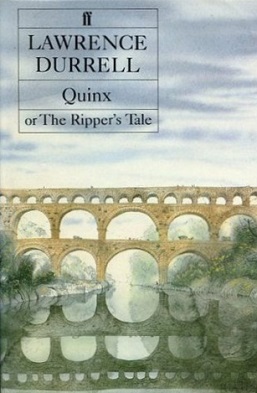
Quinx, or The Ripper's Tale is the 5th and final volume in Lawrence Durrell's "quincunx" of novels, The Avignon Quintet, published from 1974 to 1985. It explores the activities of Constance, Aubrey Blanford, Robin Sutcliffe, Lord Galen, and most of the other surviving characters as they return to Avignon and Provence in the immediate aftermath of World War II.

Sidi Bishr is a neighborhood in the Montaza District of Alexandria, Egypt. Established as a summering site by the Egyptian middle class before the Revolution of 1952, it has since become one of the largest neighborhoods of the city.
Quantum fiction is a genre of speculative fiction that reflects modern experience of the material world and reality as influenced by quantum theory and new principles in quantum physics. It is characterized by the use of an element in quantum mechanics as a storytelling device. The genre is not necessarily science-themed, and blurs the line separating science fiction and fantasy into a broad scope of mainstream literature that transcends the mechanical model of science and involves the fantasy of human perception or imagination as realistic components affecting the everyday physical world.
Clea Badaro (1913–1968) was an Egyptian painter and designer who lived most of her adult life in Alexandria, Egypt.
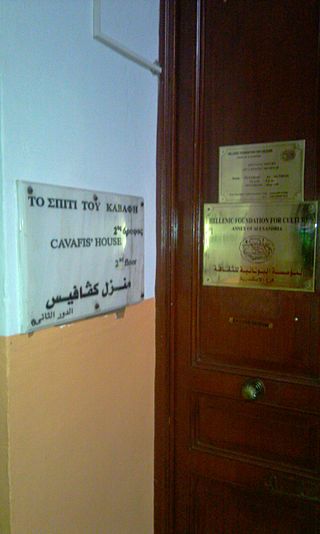
Cavafy Museum is an apartment museum in center Alexandria, Egypt, which formerly was the residence of the Greek poet Constantine P. Cavafy, where he lived most of his life.















